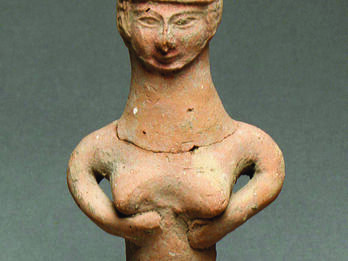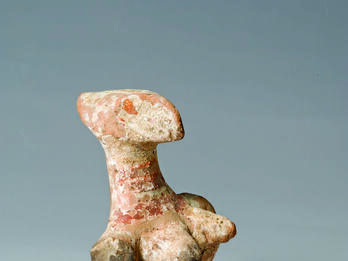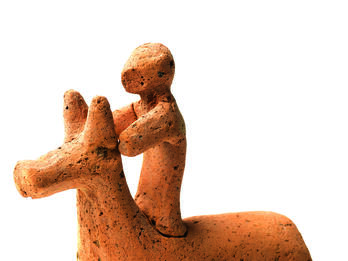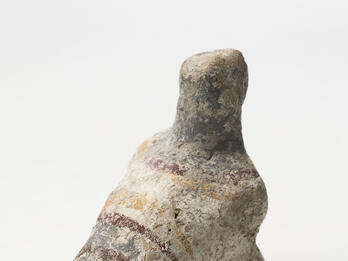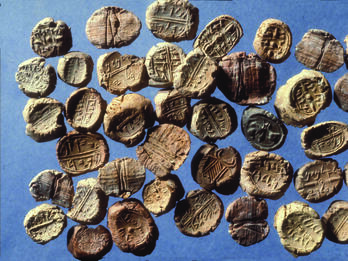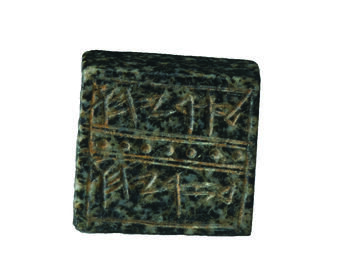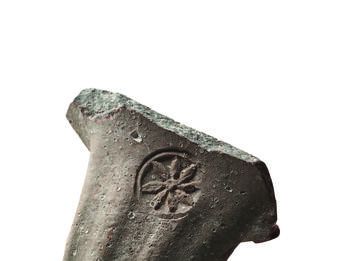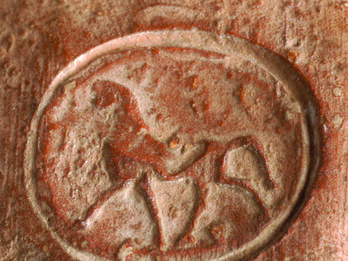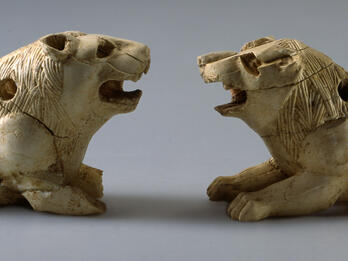Showing Results 2291 - 2300 of 5412
Public Access
Image
Terra-cotta pillar figurines are found throughout the biblical territory of Judah and date to the eighth to seventh centuries BCE. Most were decorated with a white background layer and one or more…
Places:
Lachish, Land of Israel (Tel Lakhish, Israel)
Date:
Iron Age IIB–IIC, 8th–7th Century BCE
Subjects:
Categories:
Restricted
Image
In this terra-cotta figurine from Beersheba, 5.5 inches (14 cm) high, the face is made by pinching the clay to draw out the nose, thereby forming the eye sockets. The nose has a beak-like appearance…
Places:
Beersheba, Land of Israel (Beersheba, Israel)
Date:
Iron Age IIB, Late 8th Century BCE
Subjects:
Categories:
Restricted
Image
This terra-cotta figurine from Lachish is very schematic, and the rider’s legs are not shown. The rider cannot represent an average person because people—even kings—more often rode on donkeys and…
Places:
Lachish, Land of Israel (Tel Lakhish, Israel)
Date:
Iron Age IIB, 8th Century BCE
Subjects:
Categories:
Restricted
Image
In this terra-cotta dove figurine from Beth Shemesh, 4 inches (10 cm) long, care was taken with the shape of the head and body and in showing the tail by painted lines. Yet there are no feet and the…
Places:
Beth Shemesh, Land of Israel (Tel Bet Shemesh, Israel)
Date:
Iron Age II, 10th–6th Century BCE
Subjects:
Categories:
Restricted
Image
This faience amulet from Lachish depicts the Egyptian goddess Isis sitting on a throne and holding her son, the god Horus, on her lap, a common artistic motif in Egyptian amulets. The legs are broken…
Places:
Lachish, Land of Israel (Tel Lakhish, Israel)
Date:
Iron Age IIB, 8th Century BCE
Subjects:
Categories:
Restricted
Image
The backs of many bullas, like those shown here from the City of David in Jerusalem, have impressions of the strings that once tied the rolled document and marks from the papyrus fibers of the…
Places:
Jerusalem, Land of Israel (Jerusalem, Israel)
Date:
Iron Age IIC, Second Half of 7th–Early 6th Century BCE
Subjects:
Categories:
Restricted
Image
This seal, found in En Gedi, is made of brown mottled dolerite and decorated with lines and dots that surround and separate the names.
Places:
‘En Gedi, Land of Israel (‘En Gedi, Israel)
Date:
Iron Age IIC, End of 7th–Beginning of 6th Century BCE
Subjects:
Categories:
Restricted
Image
The rosette, impressed on a jar handle here, may have been a royal insignia during the last decades of the Judean monarchy, around the late seventh century BCE. It was found at Ramat Rahel, an…
Places:
Ramat Rahel, Land of Israel (Ramat Rahel, Israel)
Date:
Iron Age IIC, Last Third of 7th Century BCE
Subjects:
Categories:
Restricted
Image
This image, found at En Gedi, depicts a prancing or galloping horse with its head and right foreleg raised. The high level of skill shown in the realistic engraving makes it one of the finest seals…
Places:
‘En Gedi, Land of Israel (‘En Gedi, Israel)
Date:
Iron Age IIC, End of 7th–Beginning of 6th Century BCE
Subjects:
Categories:
Restricted
Image
In the ancient Near East, images of paired lions served as guardians at building entrances and on furniture, where these two figurines from Samaria were presumably placed. According to 1 Kings 10:19…
Places:
Samaria, Land of Israel (Samaria, Israel)
Date:
Iron Age IIA–IIB, 9th–8th Century BCE


